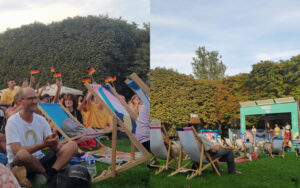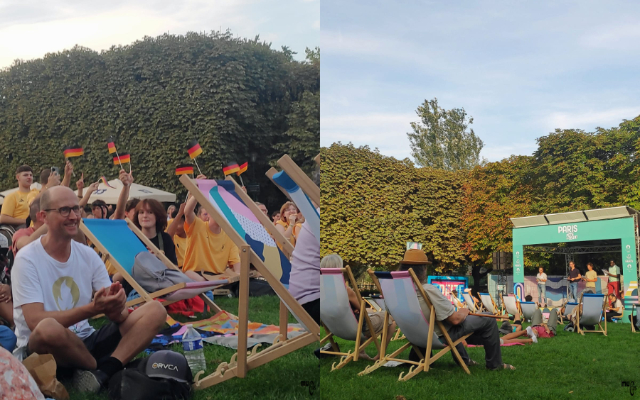
Sharmistha Gooptu in Paris
Yesterday, I made a trip to Parc de Choisy, which houses one of the 25 or so fan zones in Paris that have been set up to involve Parisians in the spirit of the Games through the Olympics and the Paralympics. I had earlier visited the fan zone in Parc Monceau on the day of the opening ceremony of the Olympics and then the Terrace des Jeux, a fan zone set up in front of the Paris Town Hall. Each of these are festive areas, but returning from Parc de Choisy yesterday, I had a sense of being a part of the city, integrated through common participation in a space of accessibility and sustainability.
Parc de Choisy, like most of the other fan zones, has been open to the public through the Olympics and now the Paralympics, and the spirit of a larger participation in the Olympic Games carries forward into the Paralympics. It is a space of full accessibility for the disabled. Set up with a giant screen and play zones for children, the public are encouraged to participate, play and watch the Games. And while the fan zone at Terrace des Jeux is a temporary creation for the duration of the Games, the areas set up in Parc Monceau or Parc de Choisy will have a more lasting legacy. Something that makes me envious because, back in India, such spaces are what we seriously lack.
For the Latest Sports News: Click Here
🚨Paris Diaries🚨@sharmisthagoop2 visits one of the #Paralympics fan zones in Parc de Choisy and discovers a space of accessibility and equality
Styled by @nautica @ShrachiSports #Paralympics2024 pic.twitter.com/qRm459hpSl
— RevSportz Global (@RevSportzGlobal) August 30, 2024
Parc de Choisy, for instance, is one of the older parks in Paris dating back to 1937. It’s located in the vicinity of the Quartier Asiatic or the oriental part of town where the major shops and businesses are Chinese or Vietnamese. Integrating this area, and other parts of Paris, through the Olympics and now the Paralympics is part of the mission statement of the Paris organising committee and what can be a lasting legacy.
The spirit of Parc de Choisy, for instance, was not one of frenzied fan activity. It was a spirit that spoke more of a sustained community involvement with people, coming in at a leisurely pace with families to partake of the fan-zone activities. Watching the Paralympics on the giant screen, for one, will carry forward this viewership into the future of para games. It is a practice of sustainability that will promote neighbourhood support for para sport, and something that each and every country should embody in some form if they wish to carry forward the commitment to universal accessibility. Set up inside the park were also modern artworks , which I assume will stay on after the Games, some depicting para sport – such as para archery or a depiction of an athlete with impairment in the legs.

Set up such spaces within our own cities, reclaim the green spaces, create facilities for a communal viewing of sport and sport that drives a mission – a mission like the Paralympics. Give small inducements for young people to come and watch disabled people play. Only then can we claim a more participatory democracy beyond the statements made by our political class. Sport and its consumption has the power to create empathy and understanding for the disabled, something that no amount of speaking about it will do.
It is something that we in India should wake up to.
Also Read: Paralympics revels in competition, that’s the very essence





